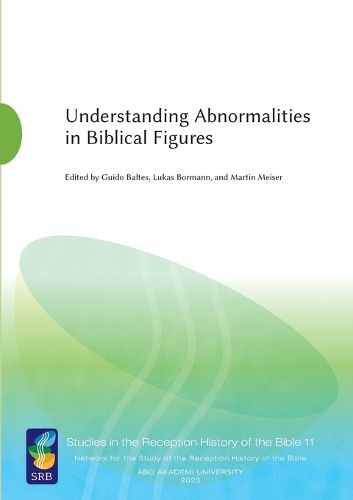Readings Newsletter
Become a Readings Member to make your shopping experience even easier.
Sign in or sign up for free!
You’re not far away from qualifying for FREE standard shipping within Australia
You’ve qualified for FREE standard shipping within Australia
The cart is loading…






This title is printed to order. This book may have been self-published. If so, we cannot guarantee the quality of the content. In the main most books will have gone through the editing process however some may not. We therefore suggest that you be aware of this before ordering this book. If in doubt check either the author or publisher’s details as we are unable to accept any returns unless they are faulty. Please contact us if you have any questions.
In the Bible and its environment there are frequent references to the extraordinary states of mind of Biblical figures: Adam, Abraham, David, Deborah, Delilah, Samson, Saul and many others. Based on Hebrew anthropology, the texts of Second Temple Judaism and the New Testament reflect the question: How do human beings and the mind relate to one another? Influenced by the anthropology of the great philosophical schools of Platonism, Aristotelianism, and Stoicism, the idea that humankind is best understood anthropologically within the framework of a body-soul dichotomy or a body-soul-spirit/mind trichotomy was also gaining a foothold in Judaism. Church fathers predominantly assume that the biblical heroes integrated by God into the history of salvation are also models of morality, they are particularly challenged by the texts in which deviant behavior is described. The question thus also opens up an ethical dimension to the history of biblical reception.
Fifteen scholars examine the tension between normality and deviance in the Hebrew Bible and the New Testament as well as in their reception in Second Temple Judaism and patristic literature. It becomes clear that the ideas expressed in these texts about deviant behavior are primarily influenced by changes in anthropological and theological assumptions. The authors adapt the tradition to the contemporary understanding of normality and deviance to reach their rhetorical aim to convince the reader about their interpretations of the Biblical figures.
$9.00 standard shipping within Australia
FREE standard shipping within Australia for orders over $100.00
Express & International shipping calculated at checkout
This title is printed to order. This book may have been self-published. If so, we cannot guarantee the quality of the content. In the main most books will have gone through the editing process however some may not. We therefore suggest that you be aware of this before ordering this book. If in doubt check either the author or publisher’s details as we are unable to accept any returns unless they are faulty. Please contact us if you have any questions.
In the Bible and its environment there are frequent references to the extraordinary states of mind of Biblical figures: Adam, Abraham, David, Deborah, Delilah, Samson, Saul and many others. Based on Hebrew anthropology, the texts of Second Temple Judaism and the New Testament reflect the question: How do human beings and the mind relate to one another? Influenced by the anthropology of the great philosophical schools of Platonism, Aristotelianism, and Stoicism, the idea that humankind is best understood anthropologically within the framework of a body-soul dichotomy or a body-soul-spirit/mind trichotomy was also gaining a foothold in Judaism. Church fathers predominantly assume that the biblical heroes integrated by God into the history of salvation are also models of morality, they are particularly challenged by the texts in which deviant behavior is described. The question thus also opens up an ethical dimension to the history of biblical reception.
Fifteen scholars examine the tension between normality and deviance in the Hebrew Bible and the New Testament as well as in their reception in Second Temple Judaism and patristic literature. It becomes clear that the ideas expressed in these texts about deviant behavior are primarily influenced by changes in anthropological and theological assumptions. The authors adapt the tradition to the contemporary understanding of normality and deviance to reach their rhetorical aim to convince the reader about their interpretations of the Biblical figures.